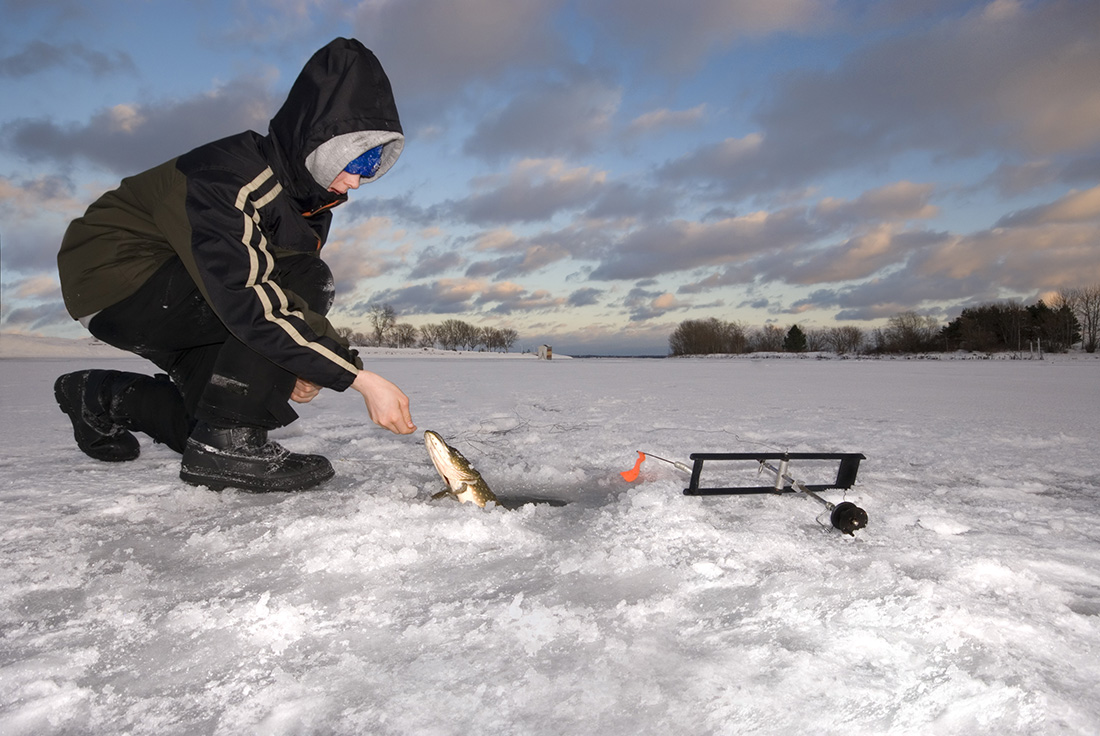I’ve always considered myself a bit of an ice fishing enthusiast. There’s something about the way sound gets absorbed into the snow that makes ice fishing such a peaceful experience.
If I had to pick the thing I like “least” about warm-weather fishing (which isn’t much), it would be the occasional hustle and bustle. While I enjoy the sound of boat motors, lines opening up and lures hitting the water, there’s just so much tranquility when it’s you and a hole in the ice. There aren’t many people on the ice, the world is moving a bit slower and you feel completely relaxed. In places like Maine, Michigan and Ontario, ice fishing gives anglers a fishing experience that keeps them coming back for more.
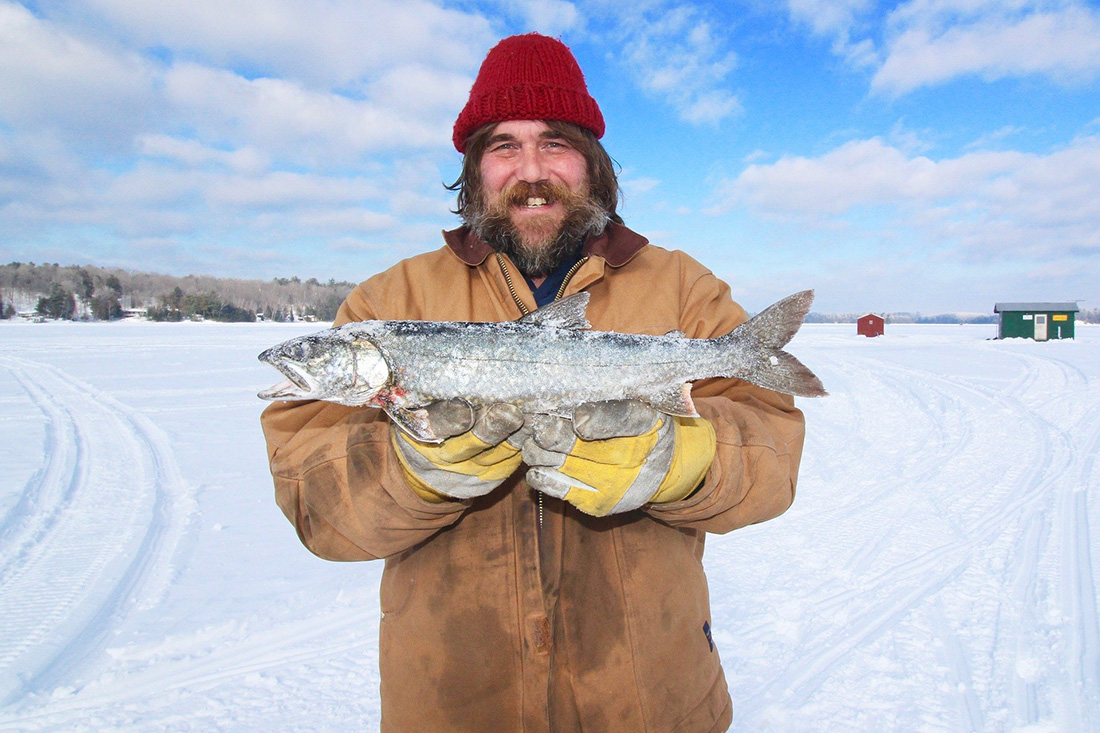
Photo: Scott Gardner
Anyway, that’s my story. I’m here to show you that ice fishing isn’t as scary as it looks. If you’ve been thinking about trying out ice fishing and you’re not sure how to go about it, no worries, because it’s as simple if not simpler than gearing up for a warm-weather fishing trip. There are a few more precautions to take, though, so stick around to the end of the article for those tips.
Let’s get to it!
What Type of Rod and Reel Do You Use?
Let me clarify something right off the bat. You don’t necessarily need to go out and buy a specific ice fishing rod for ice fishing; it’s not necessary. What is important is that you choose the monofilament line when you’re ice fishing. The best ice fishing for beginners trick I can teach you is to use this type of line exclusively.
Monofilament line is durable flexible, and it doesn’t stretch, so it makes it easier to get a good hook set on your fish in the frigid weather.
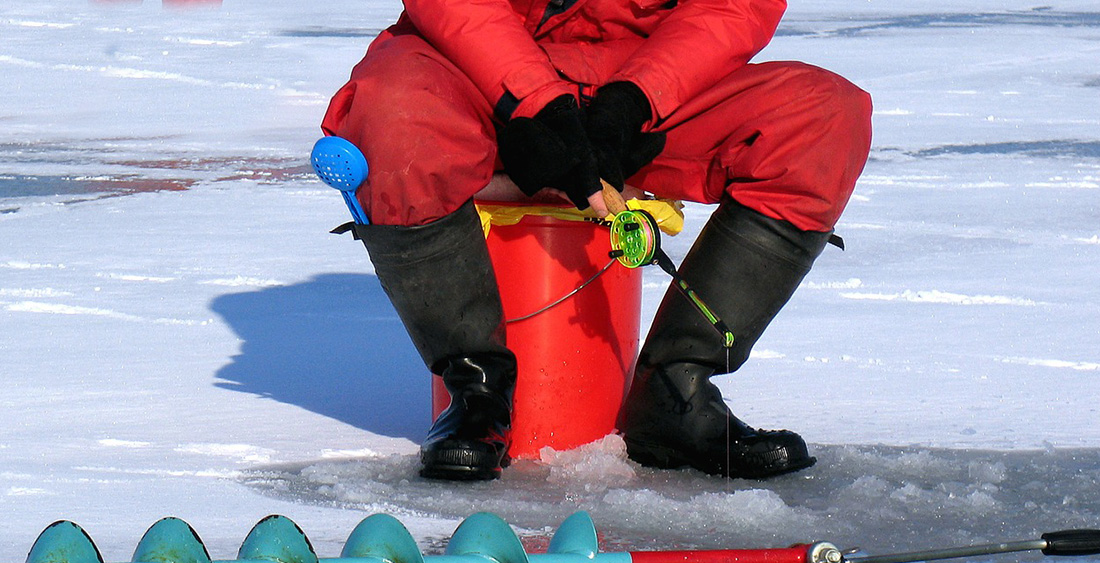
Photo: Ako9
As for the rod, if you’re set on getting an ice fishing rod, you’ll notice they’re a lot shorter than your typical spinning rod. Suppliers shorten these types of rods so you can stay closer to your hole and keep everything huddled closer together for extreme cold situations.
I recommend going for the shortest rod you can find, especially if you’re starting as a beginning ice angler. You’ll want something in the three-foot range and get a rod-and-reel combo. When you purchase the two together, you know you’re getting the perfect matchup as determined by the manufacturer.
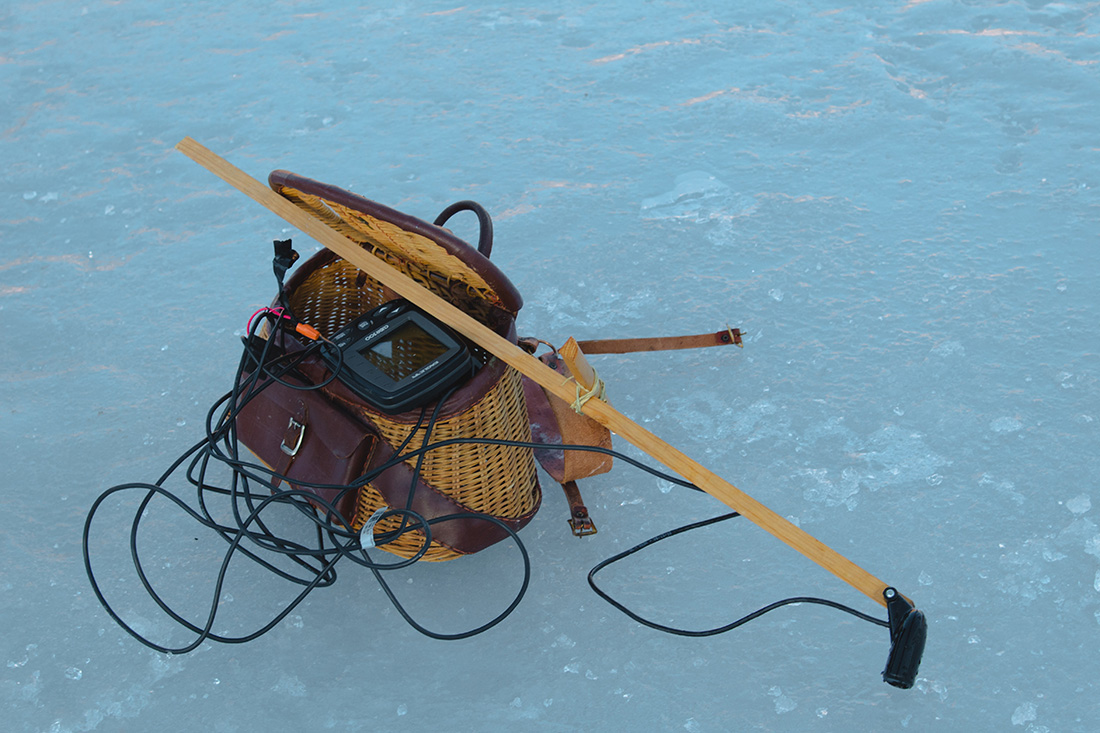
Photo: Jacob Campbell
How About Lures?
Ah yes, lures. I prefer live bait when I’m out in the cold. If you’re looking to catch some larger fish like walleye or pike, this is the choice you want to make. It’s essential to understand fish patterns and habits when the weather is cold. In addition, you always want to downsize your lures and bait when you’re ice fishing.
Because fish are cold-blooded, their metabolism dramatically slows down during the winter months. This means they’ll move less, fight less and eat less. What does this mean for you? It means you need to be a bit more strategic with how you approach the fish.
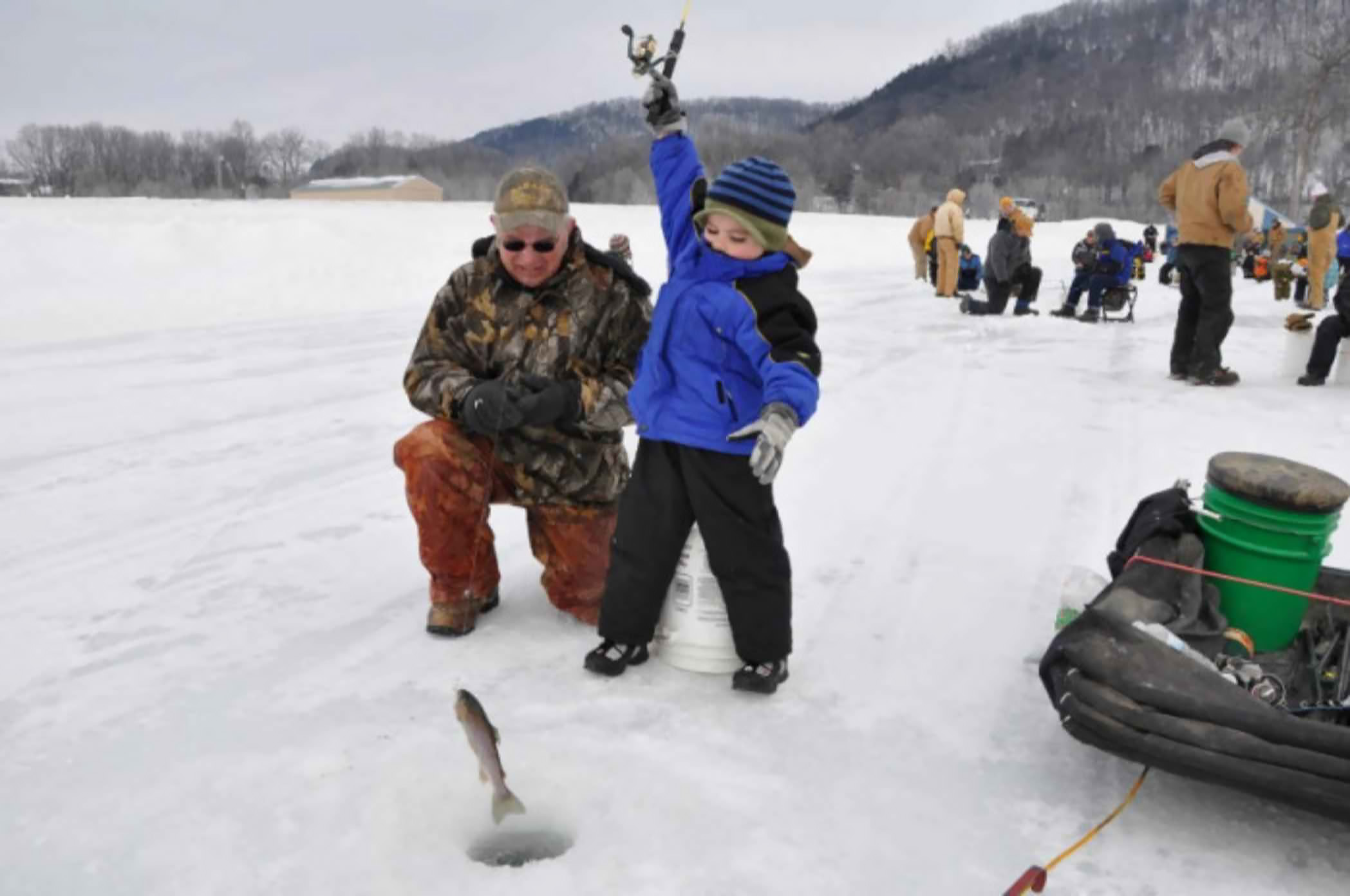
Photo: U.S. Fish and Wildlife Service
You’ll want to dangle some live bait around 15 feet below the surface and make sure to create a gentle presentation. If you present the bait too quickly, the fish will think that their quarry will take too much effort, and they’ll leave it alone.
Ice fishing is one of those things that takes a lot of finesse and experience to master.
Any Extra Gear You Should Bring?
Okay, so we covered your rod and reel. You should be all rigged up with your lures as well. Now let’s talk about some of the extra gear you might want to bring since you’re fishing in freezing temperatures.
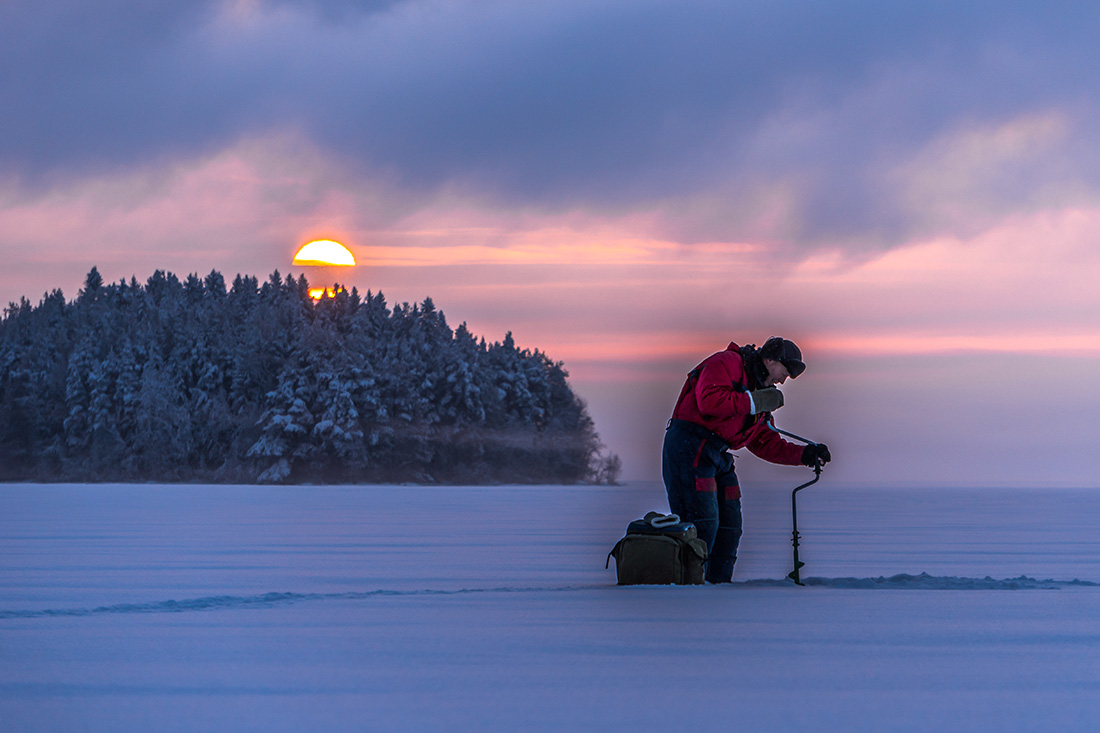
Photo: Eric Wienke
Ice Auger
First, you’ll need a way to drill into the ice. You have a few different options. There’s a hand auger, which is a corkscrew with a handle on the end. If you’re dealing with ice that is any thicker than four or five inches, you’ll have a heck of a time turning this auger long enough to get through the ice.
On the other side, we have propane powered augers that automatically drill the hole for you. For these, you need to make sure the ice is at least five inches thick, or else you could run the risk of cracking the ice and falling in. You must check with local wildlife and game departments to determine the thickness of the ice. They usually have ice thicknesses posted on bulletin boards or online. I recommend fishing a state park for your first few trips because they’ll always alert anglers if the ice is too thin.
(I’ll give you a brief breakdown of how to drill an ice fishing hole later in the article).
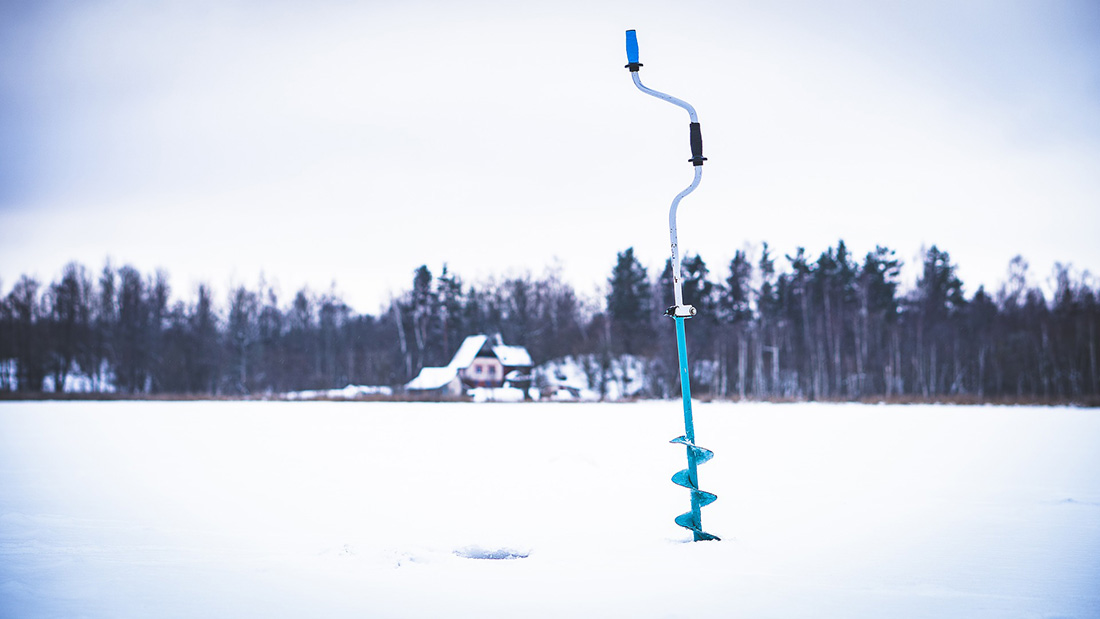
Photo: Yury Rymko
Thermal Gear
This factor should be a no-brainer, but you’ll never believe how many people go out onto the ice unprepared on their first try. You should remember one thing: A lake is a wide-open area with absolutely no protection from the wind. You run the risk of getting severe windburn or even frostbite on your face if you don’t have the proper protection on those super cold days.
Make sure you have plenty of thermal gear like long johns, heavy socks, boots, gloves, facemasks, hats and whatever else you can manage to put on your body.
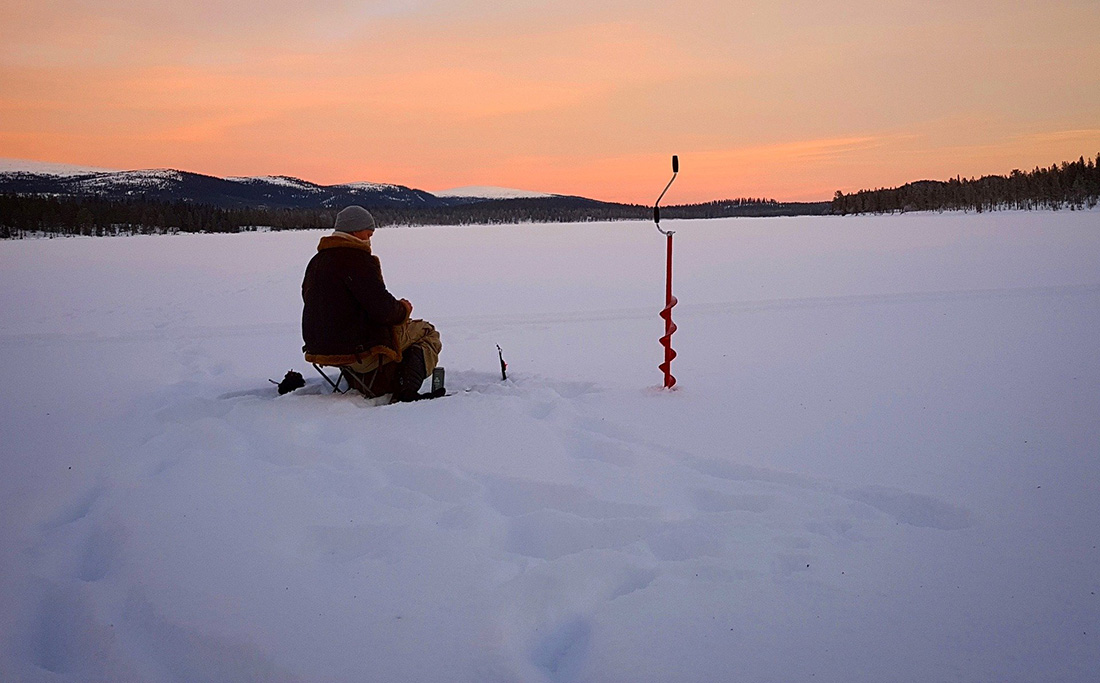
Photo: Fiskeavisen
Bring plenty of blankets and hand warmers as well if you’re dealing with temperatures in the teens or lower.
A Sled
Here’s a good expert tip for you: Bring a sled. You never know how far you’ll have to walk, and you don’t want to have to make a bunch of trips back to your car to carry things out onto the ice. Load the sled up as you would a boat and pull it to your spot with everything on it. This will save you a lot of time and energy.
How to Drill an Ice Fishing Hole (The Basics)Make a mental note for next season: before winter, scout out the water before it starts to freeze over. If you have a boat and you’ve decided on a specific fishing location, make sure you take to the water to find some ideal areas and make a note of them before the water freezes.
Choosing Your Auger
The next step you’ll need to take is to choose your auger. If you’re experimenting with ice fishing, you won’t want to pull out your wallet for a power auger just yet. Instead, consider getting a drill-powered auger. I like these because they’re easy to use, and you can drill a few holes in a short amount of time. They’re inexpensive, too.
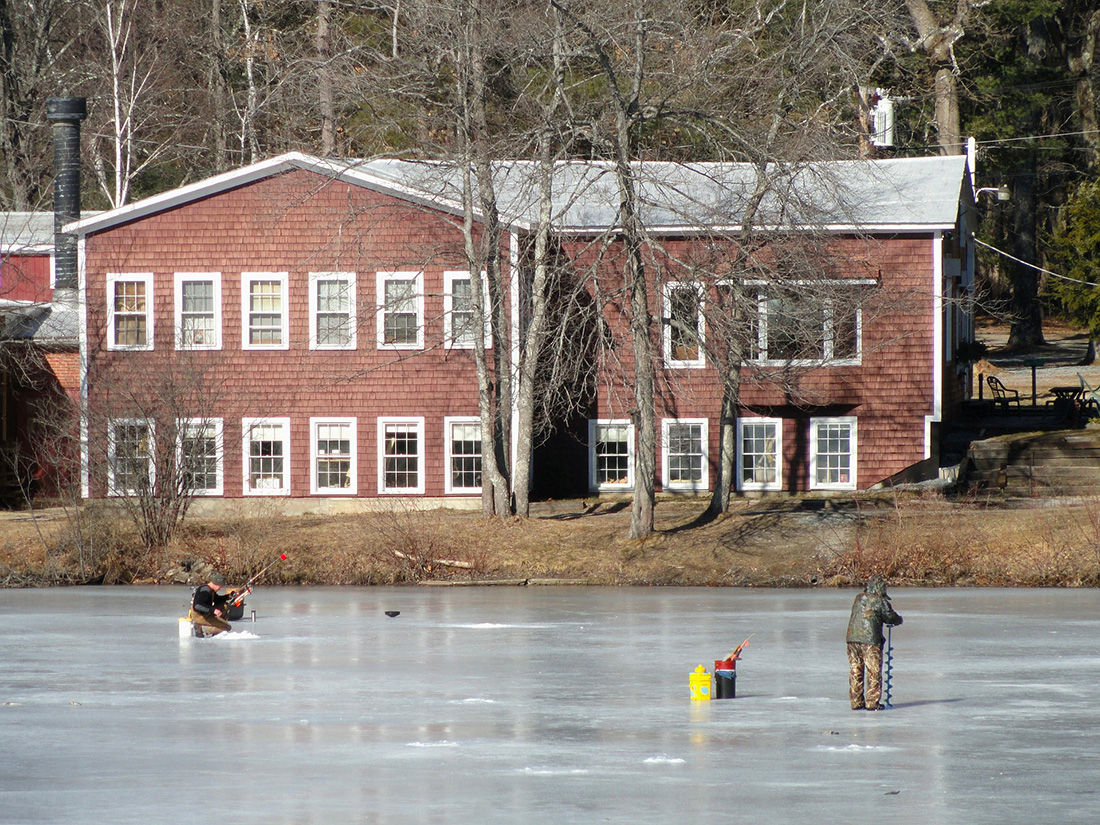
Photo: Pixabay
One significant plus side to using a hand auger is the lack of extra weight you have to pull around. It’s a trade-off for when you need to turn it for 30 minutes to break through the ice. If you’re trying ice fishing for the first time, you’ll want to go with a hand auger.
As for drilling the hole, it’s as simple as turning and cranking the auger. Once you’re out there on the ice, you’ll have no problem getting the job done. Here are a few more in-depth tips to help you drill your ice fishing hole.
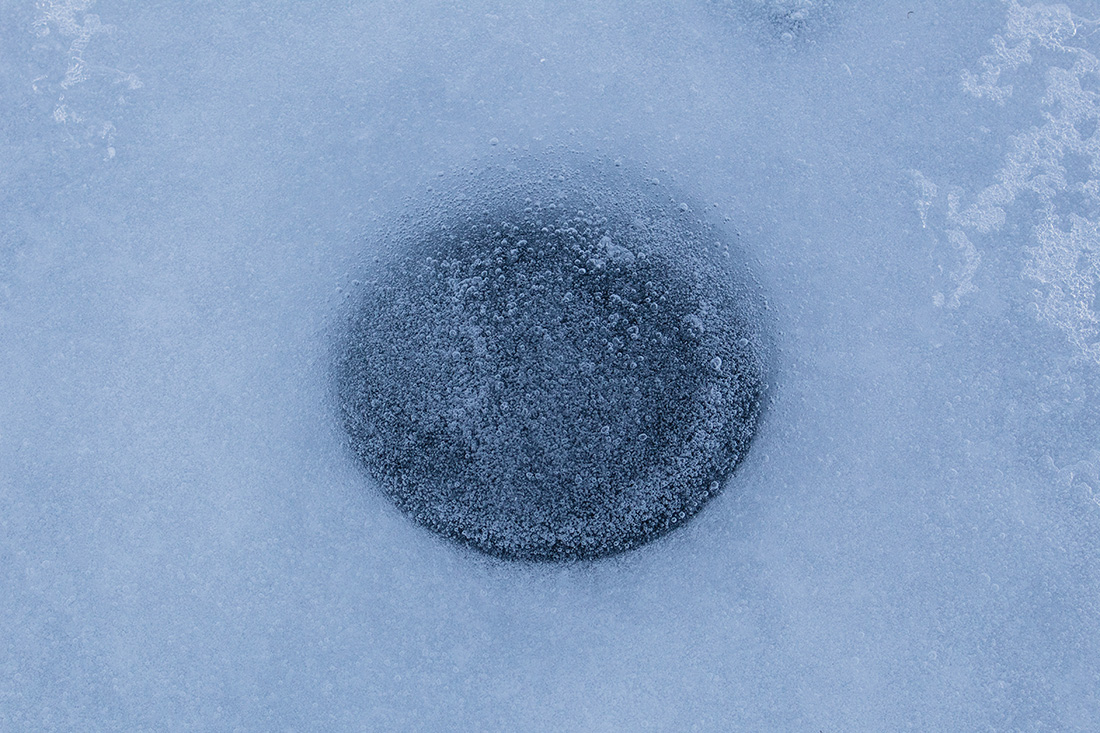
Photo: Jacob Campbell
Staying Safe on the Ice
As someone who has fallen through the ice, I want to offer a few safety tips to help you stay safe out there. First, I want to make it clear that ice fishing is not any more dangerous than warm-weather fishing. They both have their risks, but there are some things you’ll want to keep in mind when you walk out on the ice for the first time.
- Ice is thinner where there is running water. Pay attention to inlets, outlets, and dams.
- Consider buying a safety anchor. You’ll anchor yourself to the ice away from the hole. In the event of a break, you’ll have something to help pull yourself out.
- Always bring an emergency flotation device of some kind.
- Pay attention to the news and watch out for whiteouts. You can quickly get disoriented and have a hard time finding your way back.
- If you’re ice fishing alone, please make sure you tell someone where you’re going.
That’s all I’ve got. Be safe out there, and enjoy your new adventure. Make sure to drop some comments and share this article on social media. Let me know how your first ice fishing trip went!

